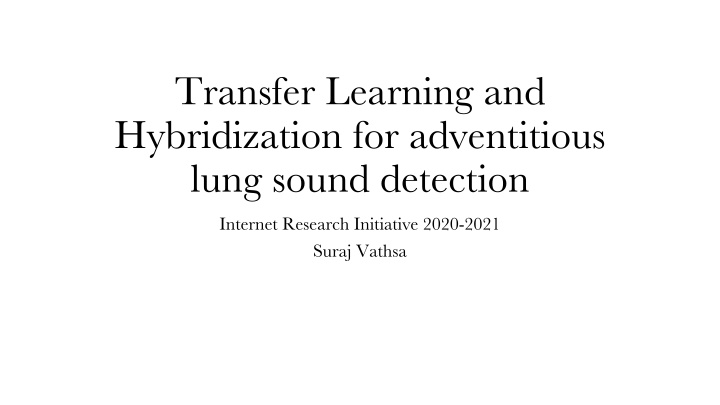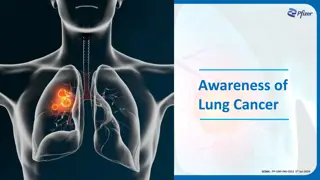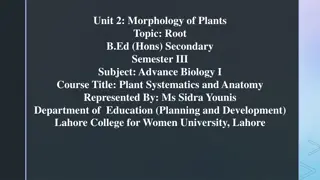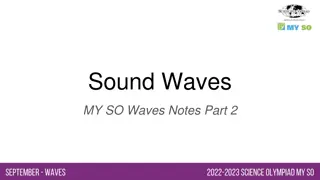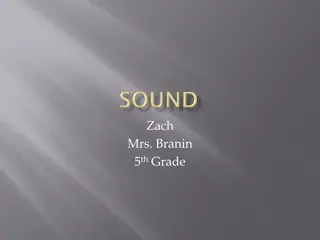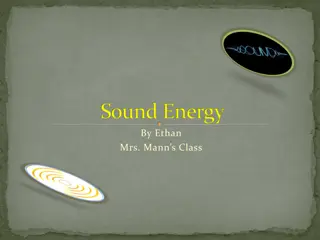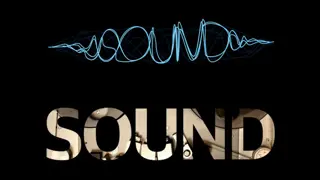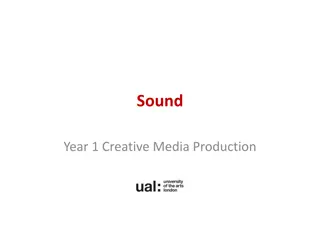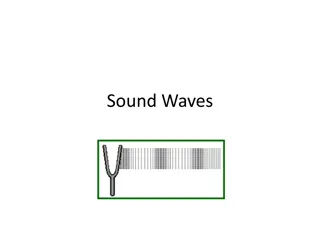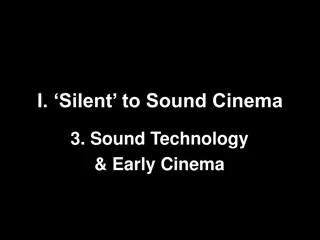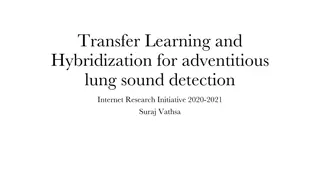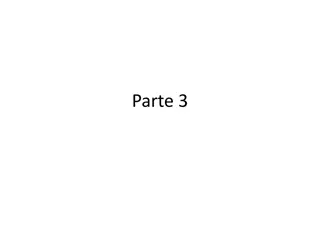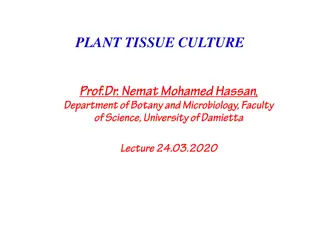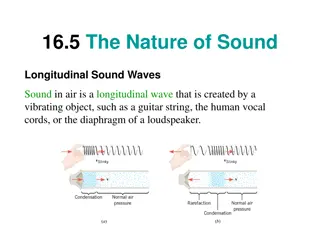Adventitious Lung Sound Detection Through Transfer Learning and Hybridization
This research initiative focuses on developing an AI system to identify wheezes and crackles in patient lung sound recordings. By employing transfer learning and hybridizing deep learning models, the study aims to enhance performance in respiratory disease diagnosis. Challenges such as data quality and missing patient features are addressed through generative modeling and data augmentation. Future work involves building a comprehensive dataset incorporating various patient variables for improved diagnosis accuracy.
Download Presentation

Please find below an Image/Link to download the presentation.
The content on the website is provided AS IS for your information and personal use only. It may not be sold, licensed, or shared on other websites without obtaining consent from the author.If you encounter any issues during the download, it is possible that the publisher has removed the file from their server.
You are allowed to download the files provided on this website for personal or commercial use, subject to the condition that they are used lawfully. All files are the property of their respective owners.
The content on the website is provided AS IS for your information and personal use only. It may not be sold, licensed, or shared on other websites without obtaining consent from the author.
E N D
Presentation Transcript
Transfer Learning and Hybridization for adventitious lung sound detection Internet Research Initiative 2020-2021 Suraj Vathsa
Ideas Goal Detect adventitious lung sounds as a first step in autonomous respiratory disease diagnosis. Develop an Artificial Intelligence (Deep Learning) enabled system to identify adventitious sounds such as wheezes and crackles in audio recordings of patient lung sounds. Employ transfer learning, i.e., using an existing deep learning model trained for a similar task. Employ hybridization of two types of deep learning models to incorporate spectral and temporal features that can be generated from lung sounds. Data imputation using generative modelling to augment training data Findings/Conclusions/Next Steps Research Method/Process ICBHI 2017 Dataset provides a total of 5.5 hours of recordings containing 6898 respiratory cycles. Hybridization was useful in both the tasks of crackle and wheeze detection while transfer learning helped in boosting the performance in crackle detection. Previous works train simple CNN or simple RNN from scratch. Trained VGGish, a popular audio classification model hybridized with a recurrent neural network for the task of detecting crackles and wheezes. Downstream diagnosis was still unsatisfactory since various key features such as patient medical history and geography were missing from the dataset. Lack of quality data was a major challenge. Addressed using audio manipulation tricks and generative modelling. Future work includes building a comprehensive dataset which incorporates lung sounds, patient history, patient demographics, and environmental variables of patient s location. Further developing generative modelling to help with effective data imputation. Convolutional Variational Autoencoder employed for generative modelling.
Dataset ICBHI 2017 Challenge Preprocessing Respiratory cycle centric Repetition of respiratory cycles Audio augmentation Features extraction from raw audio (mel spectrograms and MFCCs) Audio Generation Generated Wheeze Natural Wheeze
Deep Learning Models Used VGGish + LSTM CNN + LSTM Convolutional VAE
Results Hybridization (CNN + LSTM and VGGish + LSTM) outperforms simple deep learning models Transfer Learning helps in crackle detection. TSNE plot
